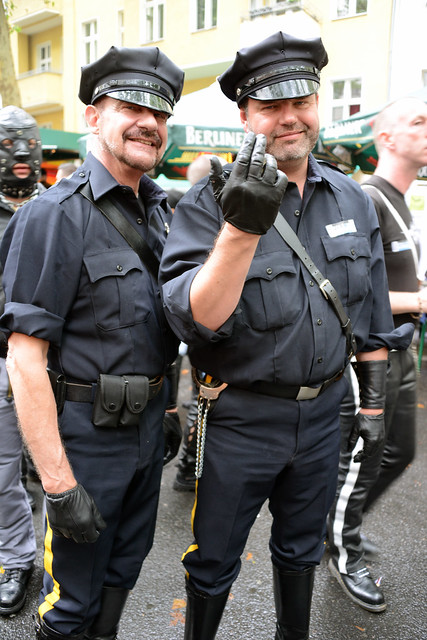
Image Credit: ulo2007
Ah, the good cop / bad cop tactic. You know, we’ve seen this used in so many different TV shows and movies that you would sorta think that everyone would recognize it when it was being used on them by now. However, that’s where you would be wrong. It turns out that this tactic is still very popular as one of many negotiation styles and negotiating techniques and is very effective. During any negotiation that you are part of, the other side may have two of their people playing different roles. One seems as though they are eager to help you while the other is aggressively trying to get the best deal for them. Guess what – the good cop / bad cop tactic is being used on you.
The Good Cop / Bad Cop Tactic
So you’ve heard about the good cop / bad cop tactic, but how does it actually work in real life? In the good cop, bad cop negotiation, two parties, working as a team, extend a series of rewards and punishments with the goal of gaining an advantage over the person that they are negotiating with. We’ve seen this technique used in interrogation rooms by law enforcement on TV.
In the business world the good cop / bad cop negotiation strategy involves one “cop” acting in a “threatening, hostile, and abusive manner,” while the other adopts a “non-threatening, friendly and sympathetic manner”. The “nice” negotiator has the goal of gaining the target’s trust and winning a concession, lest the target is stuck with the unappealing offer of the tough negotiator. A good cop / bad cop negotiation poses considerable challenges in negotiation and bargaining.
Why Does The Good Cop / Bad Cop Negotiation Tactic Work On Us?
If negotiators know that this technique exists, then why is the good cop / bad cop negotiation strategy so effective on us? This tactic preys on our tendency to like people who agree with us and seem similar to us, an effect that’s heightened in this tactic by the presence of a good guy’s demanding partner. The contrast between the two partners’ negotiating styles “makes the ‘carrots’ offered by the good cop seem even sweeter and the ‘sticks’ offered by the bad cop even harsher.
As you can imagine, the good cop / bad cop technique has been studied extensively. What the researchers have discovered is that the good cop / bad cop negotiation strategy can be very effective at helping parties claim value from their target — but only if the bad cop starts the negotiation and the good cop follows. Having this knowledge doesn’t mean you should try it, however. Similar to most types of negotiation tactics aimed at manipulation, the good cop, bad cop negotiation tactic can ultimately destroy trust between parties and harm your reputation—not to mention, damage your self-respect.
How A Negotiator Can Recognize When Good Cop, Bad Cop Is Being Used In A Negotiation
If the good cop / bad cop negotiating tactic is not going to go away, then what we need to do as negotiators is to make sure that we can detect when it is being used against us during a negotiation. The first thing that we need to train ourselves to do is to detect when a variation of the good cop / bad cop technique is being used. It turns out that there are four primary variations:
- Sequential good cop, bad cop: This is the classic strategy in which the good cop and bad cop take turns interacting with their target.
- Simultaneous good cop, bad cop: In this variation the good cop and bad cop argue with each other over how good of a deal to offer the target.
- One person as both good cop and bad cop: When you are negotiating with a single person and they use a mixture of good cop and bad cop techniques, such as switching from friendly to impatient or being indecisive about what to offer.
- Good cop warning about a future bad cop: In this variation the other side might warn that he’s giving you the best deal possible and that if you come back tomorrow, you should expect to get a worse deal from his boss
How A Negotiator Can Deal With the Good Cop, Bad Cop Negotiation Tactic
Once a negotiator can recognize when the good cop / bad cop tactic is being used on them, they then have to be able to answer the question of how they should deal with it. The people who study such things tell us that we should confront this situation head-on. There are a number of different ways to go about doing this.
One of the simplest is to tell the other side that you are aware of what they are doing. When they start to use their good cop / bad cop routine on you, tell them that you recognize what they are doing and that you are used to negotiating in a more straightforward manner. Ask them if instead you could work more collectively. Note that if you are wrong and this is just the way that they normally behave, then you could end up offending them. A good way to handle this situation is to skip naming what you think that they are doing and just ask them to be more cooperative so that both sides will be able to create new sources of value for everyone.
What All Of This Means For You
In the world of negotiating there are a number of tactics that are considered to be classics. The good cop / bad cop tactic is one of these. We’ve all seen the good cop / bad cop tactic being used in TV shows and in movies. However, it is so effective that there is a very good chance that in one of your next negotiations the other side will attempt to use it on you. Will you be ready when this happens?
The good cop / bad cop tactic generally requires two people on the other side to play different roles. One will be supportive and will indicate that they want to reach a deal with you. The other will be more abrasive and will confront you. The goal is to get you to shy away from the abrasive person and accept the deal that the supportive person is offering you. Why does this tactic work? It works because we like people who like us and we tend to go along with them when we are in stressful situations. As negotiators, we need to be able to recognize the four most common variations on the good cop / bad cop tactic. When the other side tries to use this tactic on us, we need to call them out. Do be careful in case you are wrong. Instead of telling them the tactic that they are using, instead just ask them to be less confrontational and more collaborative.
The good cop / bad cop technique is taught to a lot of negotiators. What this means is that there is a very good chance that you will be encountering it in your next principled negotiation. When you run into it, you need to first recognize what is going on and then you have to take control. Once you know what is happening, the ability of the good cop / bad cop tactic to influence you will be reduced. Let the other side know that you know and then see if you can get them to stop playing games and get back to working on the negotiation!
– Dr. Jim Anderson
Blue Elephant Consulting –
Your Source For Real World Negotiating Skills™
Question For You: When do you think that you should use the good cop / bad cop tactic on the other side?
P.S.: Free subscriptions to The Accidental Negotiator Newsletter are now available. Learn what you need to know to do the job. Subscribe now: Click Here!
What We’ll Be Talking About Next Time
So I’m willing to admit it – I like food. A lot. When we are getting ready to negotiate with someone, there is always the possibility of conducting our negotiations with all of their negotiation styles and negotiating techniques while sharing a meal with them. As tasty as this may seem, it does lead to a much bigger question. If we conduct our negotiations while eating, can it boost the possibility of our ability to reach a deal with the other side? It turns out that there are both advantages and downsides to eating while negotiating. Let’s take a look at both of them.

